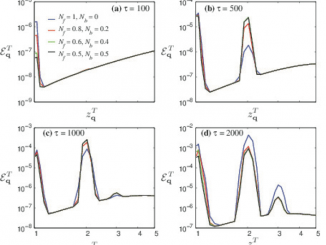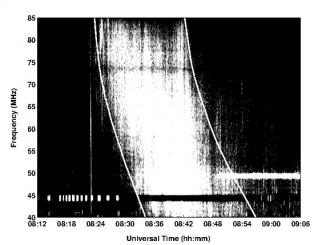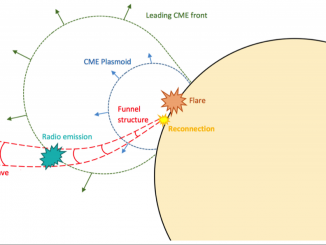Emission of radiation by plasmas with counter-streaming electron beams
by L. F. Ziebell et al.*
The phenomena of emission of radiation by the Sun, which are known as type II and type III solar radio bursts, have been known and investigated for more than sixty years. The bursts of radiation occur at a frequency corresponding to the plasma frequency at the source region, and harmonics are frequently observed. It is commonly accepted that the radiation is generated by a nonlinear mechanism, proposed by Ginzburg and […]



